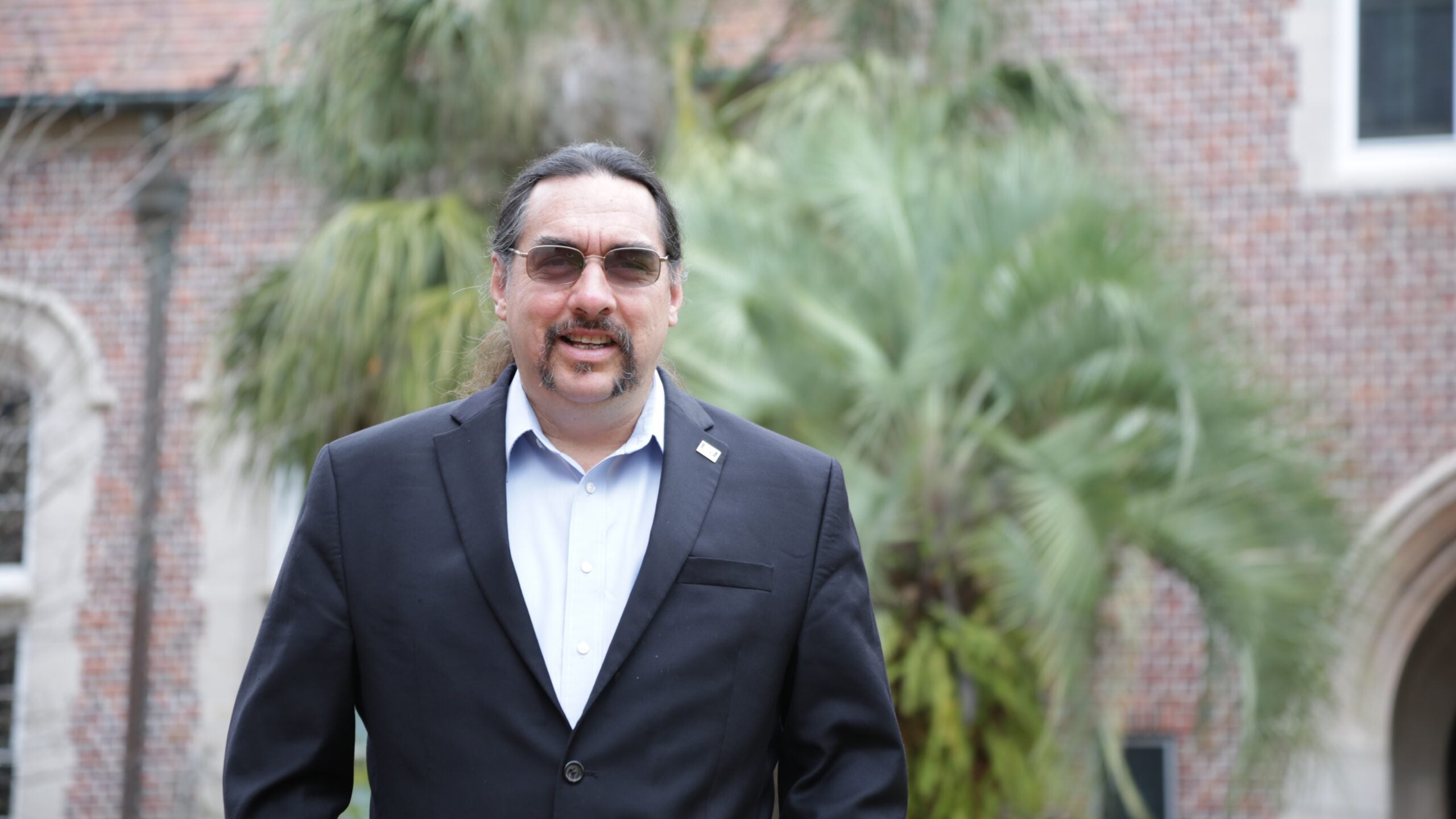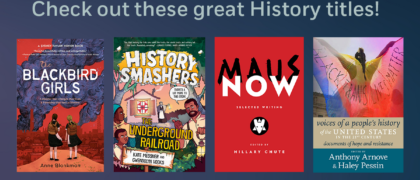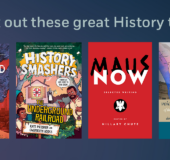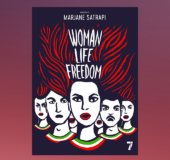I wrote An African American and Latinx History of the United States because I believe that history has an indispensable role to play at a time when many of our leading politicians are again invoking anti-Latinx and anti-Black hatred in order to garner votes. I was born in 1964. I grew up in the 1970s, a time of “backlash” against the Mexican American and African American civil rights movements. Politicians like California’s Pete Wilson, Arizona’s Joe Arpaio, and New York’s Donald Trump rose to political power by blaming immigrants and African Americans for society’s problems. (Many white citizens were genuinely angry at what they perceived to be a loss of status in the society. As a boy, my Chicano friends in San Leandro, California, and Bremerton, Washington—the two towns of my youth—were called “spics” and “wetbacks” so often that we often internalized degrading ideas about our identities and families.) African American children had it even worse.
School did not help us. Our history textbooks loudly praised Thomas Jefferson, Alexander Hamilton, and John Adams for giving us our liberties. The US Constitution was extolled as the greatest document in the history of the human species even though it strengthened slavery, limited naturalization to whites, and all but guaranteed the outbreak of a bloody civil war a few generations later. The same history textbooks were silent about our contributions as Latinx and African American peoples to the country’s institutions. Frankly, we were taught to be white nationalists from an early age. No wonder so many people in this country believe that building a wall between the United States and Mexico will solve many of our problems!
In this time of national and global crisis, we need a new, more intersectional, and inclusive Hispanic Heritage Month. A month where young and old, and people from all walks of life can come together to learn the lessons of solidarity, mutual aid, and emancipatory internationalism—the idea expressed by generations of organizers that our liberties are best secured when the ideals of self-determination and equality are enacted within and between nations.
An African American and Latinx History of the United States re-envisions American history as a global narrative where people of Latin America, the Caribbean, and Africa resisted assimilating to a debilitating status quo and instead played invaluable roles in creating this nation’s democratic traditions. Readers will learn how the Haitian Revolution fueled anti-slavery struggles and independence movements from the United States to South America. In subsequent generations, independence struggles in Cuba, Mexico, Nicaragua, and other nations fired the imaginations of anti-slavery activists in the United States and led to the creation of cross-border solidarity movements. The abolition of slavery in Mexico opened a new front in the war for freedom. Mexicans offered sanctuary and liberty to escaped slaves from the United States and this set in motion the fatal events resulting in the US invasion of Mexico in 1846, known incorrectly as the “Mexican-American War.”
Even after the US triumphed in the war, American diplomat Nicholas Trist discovered that “[T]he Mexicans not only understood the project of forcing slavery into the territory sought to be acquired from them, but viewed it with an abhorrence which strangely contrasts with the pro-slavery proclivity of [the United States].” When Mexicans traveled to El Norte later in the century, they brought this love of liberty with them.
Understanding that Mexicans, Haitians, and Latinx people have much to teach us about the struggle for freedom requires a new framing of US history, one that does not relegate Black and Brown people to colorful sidebars in textbooks. Many of the students I work with at the University of Florida, as well as in antiracist workshops, are first-generation immigrants. They are frustrated that their high school history books are silent on the sacrifices and the contributions made to this nation by their ancestors and elders from Puerto Rico, the Dominican Republic, Venezuela, and other nations. In conducting history workshops in high schools using the teaching guide to An African American and Latinx History of the United States, I have been deeply moved by students’ excitement when they discover connections between movements for justice in their countries of origin and the traditions of revolutionary internationalism in the United States.
If we decry the narrow nationalism of today’s political debates, we must begin to write histories that demonstrate how individuals in the United States have tried to build linkages to struggles in other countries. In 1927, in his essay “The World in Ferment,” Black journalist William Jones wrote: “Now let your vision travel in a circle as the world whirls and passes over Mexico, South America, South Africa, India, Haiti and some of the islands of the sea, and you get the real significance of what is happening in China.” The Afro-American newspaper writer capitalized his next sentence for full effect: EVERYWHERE UNDER DOG NATIONS AND GROUPS, MOST OF THEM COLORED ARE TRYING TO PRY LOOSE FROM THE STRANGLE HOLD OF WHITE GREED.”
Half a century later, Howard Jordan, New York Assemblyman Jose Rivera, and Congressman Roberto García founded Latinos for a Free South Africa (LAFSA) in 1985. “Growing apartheid repression in South Africa ‘mandates a collective response by the Latino community,’” Rivera said at the time. “‘Our new organization represents the first endeavor to bring isolated initiatives together under one banner for freedom.’” In a collective statement given to the press, the founders of LAFSA noted that, “Latinos who along with their African-American brothers have been the victims of discrimination and racism in this nation, are particularly repulsed by this South African system of apartheid where resources are allocated on the basis of color.” Jordan stated that, “we want to foster Black-Latino unity through an understanding of the relationship between the struggle in South Africa, Central and Latin America and the domestic situation affecting Blacks and Latinos in the US.” Learning how Latinx organizers built political alliances in the past can help us today as we recognize that it is impossible to make progress unless we can forge new intercultural, interracial, and intergenerational coalitions.
When the history of Latinx people is placed at the center of our national narrative, US history becomes profoundly a working class affair. It is the history of Mexican American steelworkers, copper miners, and sharecroppers forming the bedrock of the Congress of Industrial Organizations and driving the rebirth of the industrial unionism of the Great Depression. The foundations of this nation’s wealth have been built not by the billionaires beloved by mainstream media, but by centuries of unpaid as well as profoundly under-paid labor of African Americans and Latinx people—slaves, braceros, sharecroppers, undocumented workers and many others.
Exploring the complex relationships between African Americans and Latinos during the past two centuries is also a necessary precursor to creating a new kind of multicultural society that does not rest on racial scapegoating and victim blaming. In recent antiracist workshops sponsored by remarkable social justice organizations like the South Florida People of Color and the Broward People of Color, I participated in candid discussions of antiblack racism within Latinx communities. We should use Hispanic/Latinx Heritage Month to challenge racism of all forms and to acknowledge that British, French, Portuguese, and Spanish colonialism thrived for centuries by using the divide-and-conquer strategies of racial and caste distinctions to fuel self-hatred and conflict.
Today, we live in a culture where one group’s gain is perceived as another’s loss. Yet, cooperation under duress has been a major theme of our shared histories. More than a century after Mexico freed itself from Spanish rule, Mexican American railway men in Austin, Texas, were still telling stories of the African-descent heroes of the Mexican War of Independence, particularly about Vicente Guerrero, a man of mixed African, Indigenous, and European ancestry. “I’ve just come back to my typewriter after listening to tales of [Vicente] Guerrero told me by citizens of the Mexican-American community here in my Texas home town,” Harold Preece, a white journalist, noted. “After hearing those tales of that knight of humanity, I am planning to get a picture of Vicente Guerrero to hang alongside the picture of Abraham Lincoln in my den.” A man who worked as a section hand for the Missouri Pacific Railway told the journalist: “My great grandfather fought with him, barefooted and bareheaded, in the hills of Mexico, when all the white leaders of the revolution had surrendered and accepted pardons from the King of Spain. You see, Guerrero would never make peace with the King because the King would not grant any reforms that ended discrimination against Guerrero’s people, Los Negroes de Mexico.” Mexican railway workers taught Preece that Black struggles for freedom had helped to liberate an entire nation. What a great lesson to learn and to teach during Hispanic/Latinx Heritage Month!
Sharing each other’s stories is more important than ever in a time when we have been encouraged to return to racial scapegoating and animosity between nations. Building bridges of communication is a more effective technique for getting along in the twenty-first century than in building walls. We must demand that our historical narratives reflect the rich diversity and connections between the peoples of the Americas and beyond.
About the Author
Paul Ortiz is director of the Samuel Proctor Oral History Program and a professor of history at the University of Florida. He is the author of Emancipation Betrayed: The Hidden History of Black Organizing and White Violence from Reconstruction to the Bloody Election of 1920, An African American and Latinx History of the United States, and coeditor of the oral history Remembering Jim Crow: African Americans Tell About Life in the Segregated South. He lives in Gainesville, Florida





